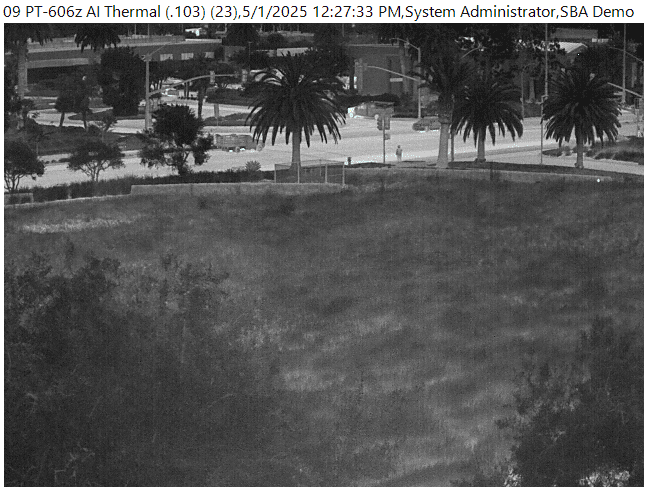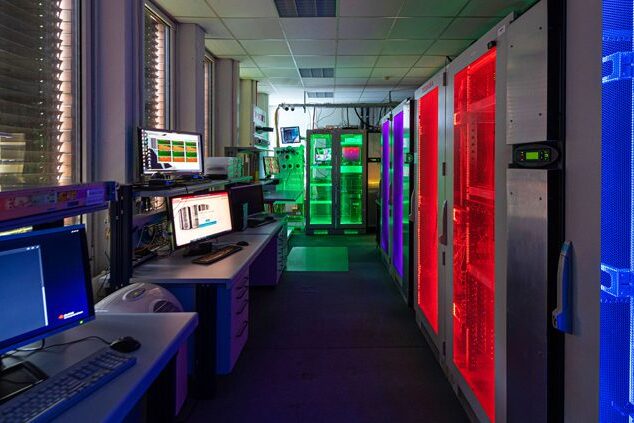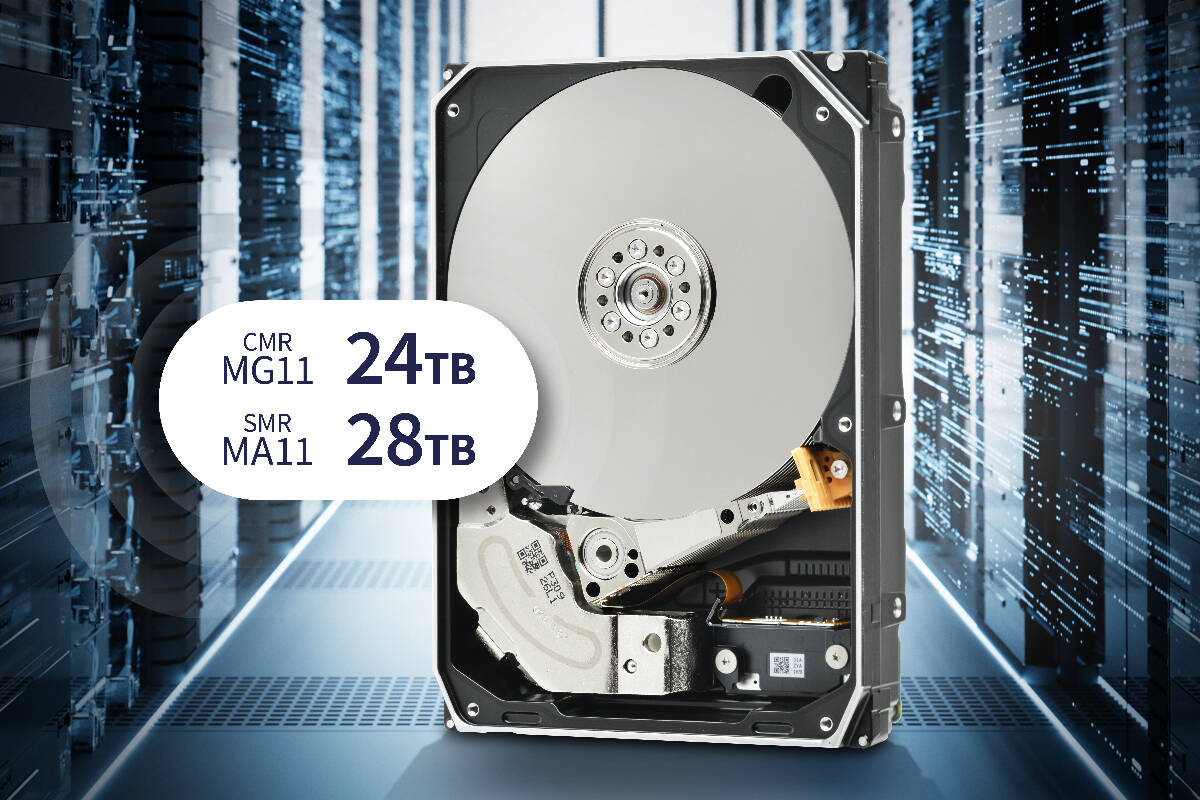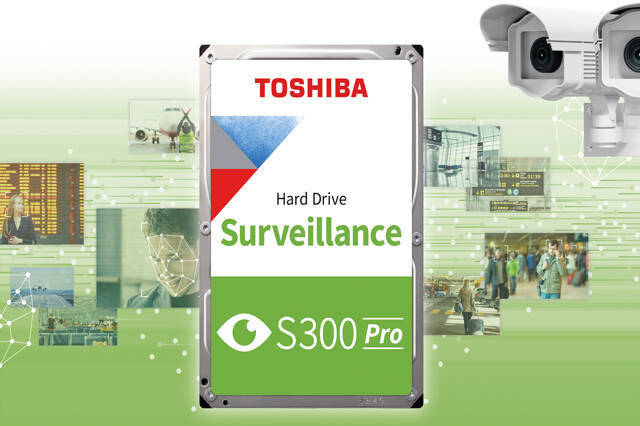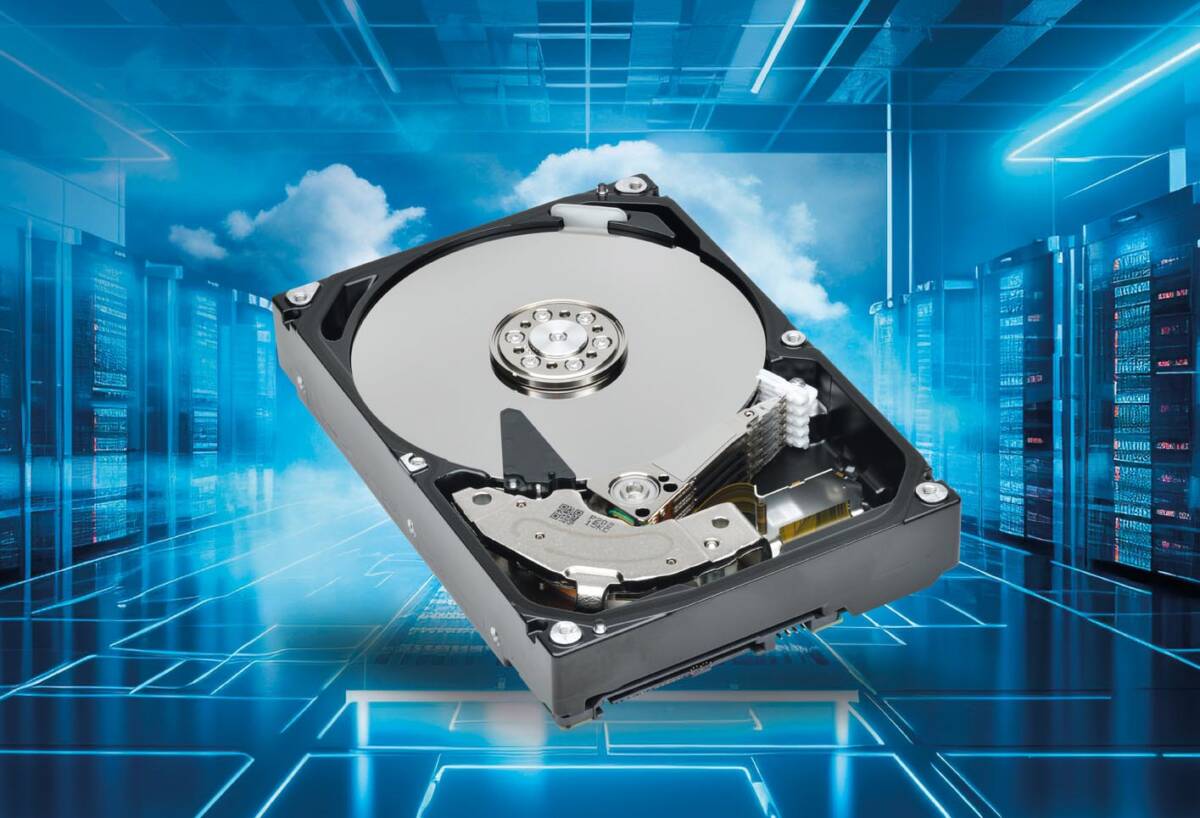Rainer Käse, Senior Manager at Toshiba Electronics Europe explains how to ensure your HDD choice meets your surveillance storage needs.
The selection of storage for surveillance systems has different requirements from other, large storage applications. With the demand primarily on the writing side, storage needs to be capable of simultaneously handling dozens of video channels. In addition, the storage medium needs to be ultra-reliable without ignoring typical mass-storage challenges, such as heat generation and power consumption.
This article looks at some of the trends in the surveillance industry and how Toshiba’s HDD technology has been implemented to create a family of disk drives that target surveillance applications.
Global challenges in surveillance
In our ever more security conscious world, demand for professional-grade video surveillance is growing rapidly. Combining state-of-the-art camera systems with intelligent software means that anyone can have security that never sleeps, never misses a thing and does not demand a salary.
According to research firm IHS Markit, less than 10 million cameras shipped globally in 2006. However, ten years later that had grown ten-fold to 100 million and is forecast to be 130 million in 2018. However, as sales volumes grow, so prices are coming under pressure. The 30% unit growth between 2016 and 2018 is only forecast to increase revenue by 6%, indicating a significant drop in per-unit revenue.
The biggest consistent challenge being faced by manufacturers and operators of video surveillance systems is that of security. As systems become more open and interconnected into wider building management systems in smart buildings, so they become network connected, exposing them to malicious external attacks.
While systems are inherently secure, as the number of cameras deployed per system increases, shortcuts such as assigning the same access credentials to every camera, or storing suites of passwords in insecure spreadsheets – both of which makes the hacker’s job easier.
With the new European GDPR legislation coming into force imminently, the processes surrounding the collection, use and storage of video surveillance data become more rigorous with the prospect of significant fines for not following the rules.
As systems become larger with more cameras attached then system bandwidth and data storage becomes an issue. The need to identify individuals and things such as vehicle licence plates from video is leading more operators to upgrade to 4K video systems, which will demand more powerful surveillance systems with greater bandwidth and storage.
Key challenges in storage systems
The data being generated by video surveillance systems is somewhat staggering. In 2014, around 566 petabytes of data was produced in a single day, according to estimates by IHS Markit. To put that in context, that is over 11 million Blu-ray movie discs, or twice the amount of user data stored by Facebook. In the following four years to 2018, that amount has almost quadrupled with over 2,000 petabytes being generated every day – all of which requires storage.
As surveillance systems operate 24/7/365, so do the storage systems connected to them, which creates a particular set of challenges for the selection of storage media. As most systems these days are based on digital cameras, HDDs are most commonly used for storage. Innovations in speed, capacity and interfaces have all contributed to a continuously reducing cost-per-gigabyte.
Any video surveillance system is only as good as the storage that it records to. Without reliable storage, some or all of the data recorded can be lost. While individual drive reliability is a key factor in selecting surveillance storage, data reliability and availability is further enhanced by the use of RAID arrays. As data is stored redundantly on several drives, one or more drives can fail with no loss of data and, in many systems, the failed drive can be ‘hot plugged’, meaning that it can be replaced without the need to power off the system.
As video surveillance storage systems are operating 24/7/365 so power consumption is also a key challenge, not only for the power that is consumed but also for the heat generated in what are often densely packed arrays of drives. As elevated temperatures are often linked to reduced operating life, keeping the array cool is a key challenge for storage designers.
A number of factors determine the size of the required storage. Firstly the number of cameras connected will determine the amount of data being delivered, this will also determine the write speed of the drives as they need to record data at the rate it is produced.
The type of data being stored will also have an impact on the size of the storage – for example if there is legislation that stipulates that a particular type of data has to be stored for a certain time. Businesses may also choose to store data for longer periods as a way of evidencing that they have complied with legislation. As an example, the recently-legalised marijuana industry in the USA is increasingly using (and storing) video surveillance data to prove compliance with stringent legislation governing their activities.
While the failure of a single camera in a system is relatively minor (and key areas may be covered by more than one camera as a backup), the failure of a storage system can be far more significant. There may be a direct cost (a fine from an authority or even the loss of a licence to operate) for lost data or an indirect cost as the loss of data hampers business activity.
Is SSD an option for video surveillance storage?
The way in which video surveillance data is written defines the type of media that is preferable for a given application. Modern SSDs are smaller and lighter than HDDs, and they consume less power. They are also generally faster than HDDs, especially at random access – so, to many, they would seem to be a natural choice.
However, given that the nature of video surveillance data is sequential, with almost no need for random access (which contrasts with an enterprise database application) an array of HDDs can be even faster than a solution based on SSD. This, coupled with the fact that per Gigabyte, SSDs remain significantly more expensive means that HDDs will remain a viable option for video surveillance storage for some time to come.
Delivering reliable performance
Designers of HDDs optimise their drives for the environment that they will operate in and for the type of workload that they have. For this reason there are differences between enterprise, NAS and surveillance drives that mean the appropriate type should be selected to ensure reliability in an application.
With a surveillance application, the time available for error correction is limited so, instead of spending time correcting errors that may interrupt the frame stream, surveillance HDDs drop a frame of data which is acceptable and has little impact in video streaming applications.
Surveillance HDDs also typically have a wider operating temperature range (0°C-70°C) than enterprise drives (5°C-55°C) to reflect the fact that, while enterprise class drives are deployed in air-conditioned data centres, surveillance drives are located in other areas of the building that may be not as well or precisely cooled.
In common with some other types of HDD, surveillance HDDs often incorporate some form of rotary vibration sensing. This is particular valuable in multi-bay applications as vibrations of one drive can affect the positioning accuracy of neighbouring drives, degrading their performance. The rotational vibration sensor detects these disturbances and provides a feedback signal that allows the vibration to be compensated for, thereby improving drive performance.
Latest HDD technology
Recently released to the market, Toshiba’s 3.5-inch S300 surveillance hard drive is designed and tested specifically for 24/7/365 surveillance applications. The S300 series is available in capacities from 4TB to 10TB, giving the ability to capture a history of video evidence over an extended time period.
Drives in the S300 range are built for speed and capacity, ensuring that mission-critical video surveillance is continually recorded and safely stored. Supporting up to 64 cameras and in excess of eight drive bays the S300 drives are suitable for the largest video surveillance installations. With a rotational speed of 7200 rpm (for the 6, 8 and 10TB models), sustained data transfer speeds of 248MB/s at a latency of just 4.17ms are possible, helped by a buffer size up to 256MB.
The drives are suitable for use in rugged environments and can operate at temperatures as high as 70°C.
The S300 drives are rated for 24/7 operation and with an annual rated workload of 180 TB they show an MTTF of 1 million hours, which translates into an annualized failure rate as low as 0.87% within the standard three-year warranty.
Summary
Video surveillance is an important part of modern life and is increasingly being used to protect property and prove compliance with legislation. As users demand ever larger systems with greater resolution, pressure is being put on system bandwidth and storage media.
By selecting an HDD, such as the S300 series from Toshiba that is optimised for use in video surveillance systems, users are assured that they will be able to capture and store surveillance data safely and securely, even in harsh environments.
www.toshiba.eu
Ensuring video surveillance data is safely stored
About Security Buyer
Security Buyer is the leading authority in global security content, delivering expert news, in-depth articles, exclusive interviews, and industry insights across print, digital, and event platforms. Published 10 times a year, the magazine is a trusted resource for professionals seeking updates and analysis on the latest developments in the security sector.
To submit an article, or for sponsorship opportunities, please contact our team below.

Rebecca Spayne
Managing
EDITOR

Georgina Turner
Sales
Manager

Afua Akoto
Marketing Manager
Read the Latest Issue
Follow us on X
Follow us on X
Click HereFollow us on LinkedIn
Follow us on LinkedIn
Click HereAdvertise here
Reach decision makers and amplify your marketing




